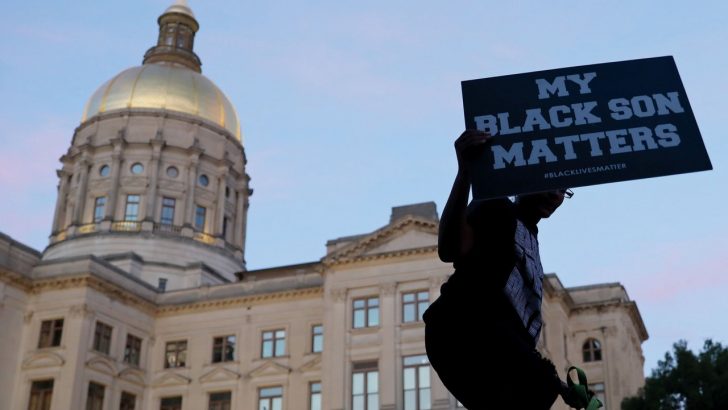We cannot expect perfection from all of those who went before us writes David Quinn
You’ll have noticed in the last few weeks that statues of certain historical figures are under attack and have even being pulled down because of an association between those figures and racism. The most dramatic example took place in Bristol when the statue of Edward Colston was pulled down by a crowd and thrown into the nearby harbour. Colston, who lived mainly in the 17th Century, had made a fortune from the slave trade.
What sparked this off was the killing of African American, George Floyd by a policeman last month, sparking international outrage and huge street protests and sometimes violence.
Colston certainly deserved to have his statue taken down, but it should have happened after a vote by the town council following a public consultation.
Figures
In any case, Catholic historical figures are also being targeted. For example, a statue of the Spanish 18th century missionary, recently canonised by Pope Francis, Fr Junipero Serra, was vandalised in San Francisco and one was torn down in Los Angeles.
Fr Serra sought to convert native Americans who were sometimes herded on to mission stations, kept there against their will and at times subjected to beatings. Defenders of Fr Serra say he did a great deal to protect native Americans from Spanish soldiers and colonisers. For native Americans, life was often far more dangerous away from the mission stations than on them.
The archbishop of Los Angeles, Archbishop José Gómez, defended St Junipero. He said: “He preached God’s compassion, fought for the dignity of women and the rights of America’s native peoples, and he was probably the first person in the Americas to make a moral case against capital punishment.”
Now we see depictions of Jesus as a white man are under attack. Jesus was, of course, Jewish and Middle Eastern by ethnicity and most likely dark skinned. Is it therefore in some way racist to depict him as white? This is the question now being asked.
But if you go to other countries, you will see Jesus portrayed as black, or Chinese, or Fijian. This is what the Church calls ‘inculturation’, that is, presenting Jesus, and other Christian figures and symbols in ways that people in other cultures can relate to, so long as those figures and symbols do not lose their true meaning in the process
Skin Colour
The skin colour of Jesus was, of course, irrelevant, and if portraying him in such a way that he can be most related to by the people of a given culture makes it more likely that they will become Christians, there is nothing wrong with that in itself, up to a point.
However, the sudden debate about the skin colour of Jesus or the appropriateness of leaving in place the statues of historical figures – whether saints or otherwise – who are associated with the West’s colonial past, shows how sensitive the issue of race and history has become again.
The question is, what should the Church do, and how should it approach the issue of race? In a way, this is a little easier for Irish people. We were not a colonial power, even if some Irish people did serve in the British colonies and in the Southern parts of the United States during the era of slavery.
But as a nation, we do not carry the same guilt as those Western countries that did have empires because we were ourselves ruled by a colonial power and never had a chance to colonise anyone. We gain Independence in 1922 precisely because the colonial era was starting to wind down.
Perhaps some might like to attack the vast Irish missionary effort as a form of ‘cultural imperialism’, but on this basis, no-one should ever seek to convert anyone to their beliefs. If you speak to (say) Nigerian Christians living in Ireland, many are very grateful to Irish priests and nuns for introducing them to Christianity and for providing them with an education.
Convert
Today, there is a massive effort to convert the entire planet to the values of Western liberalism and individualism. Is this wrong in itself? No. It depends on how it is carried out.
The Church, as a very old institution, is inextricably caught up in the controversies involving Western civilisation itself. Western civilisation is now presented as a long history of racist bigotry and oppression. Every historical figure is being assessed and precious few will be found who didn’t have racist attitudes of some sort, to a greater or lesser extent. This includes some Church figures.
But it also includes very many figures of the Enlightenment who were decidedly anti-Christian. Racist attitudes gained huge added impetus with the rise of scientific rationalism and Social Darwinism (‘survival of the fittest’, natural selection etc) in the 19th century and for several decades into the 20th.
Almost all ‘respectable’ people believed in eugenics at one point, namely the belief that ‘good breeding’ would lead to a better, fitter, human race, and that ranked non-whites lower than whites, and among whites, often ranked the Irish low down.
Today, of course, eugenics is still practiced in that children with genetic and other abnormalities are frequently aborted before they are even born.
The Church has been a consistent opponent of eugenics.
For its part the Church must, of course, do what it can to eradicate racism in all parts of the world where it has influence, including in its own ranks. But it should be careful about adopting a puritanical attitude towards previous eras. Almost no-one from the past passes muster compared with present attitudes. We must realise that as values change, many figures of today won’t pass muster in the future either.
In the final analysis, we have to exercise a little mercy and not demand perfection from all who went before us. Judge not, lest you be judged, should act as something of a guide in this


 David Quinn
David Quinn
